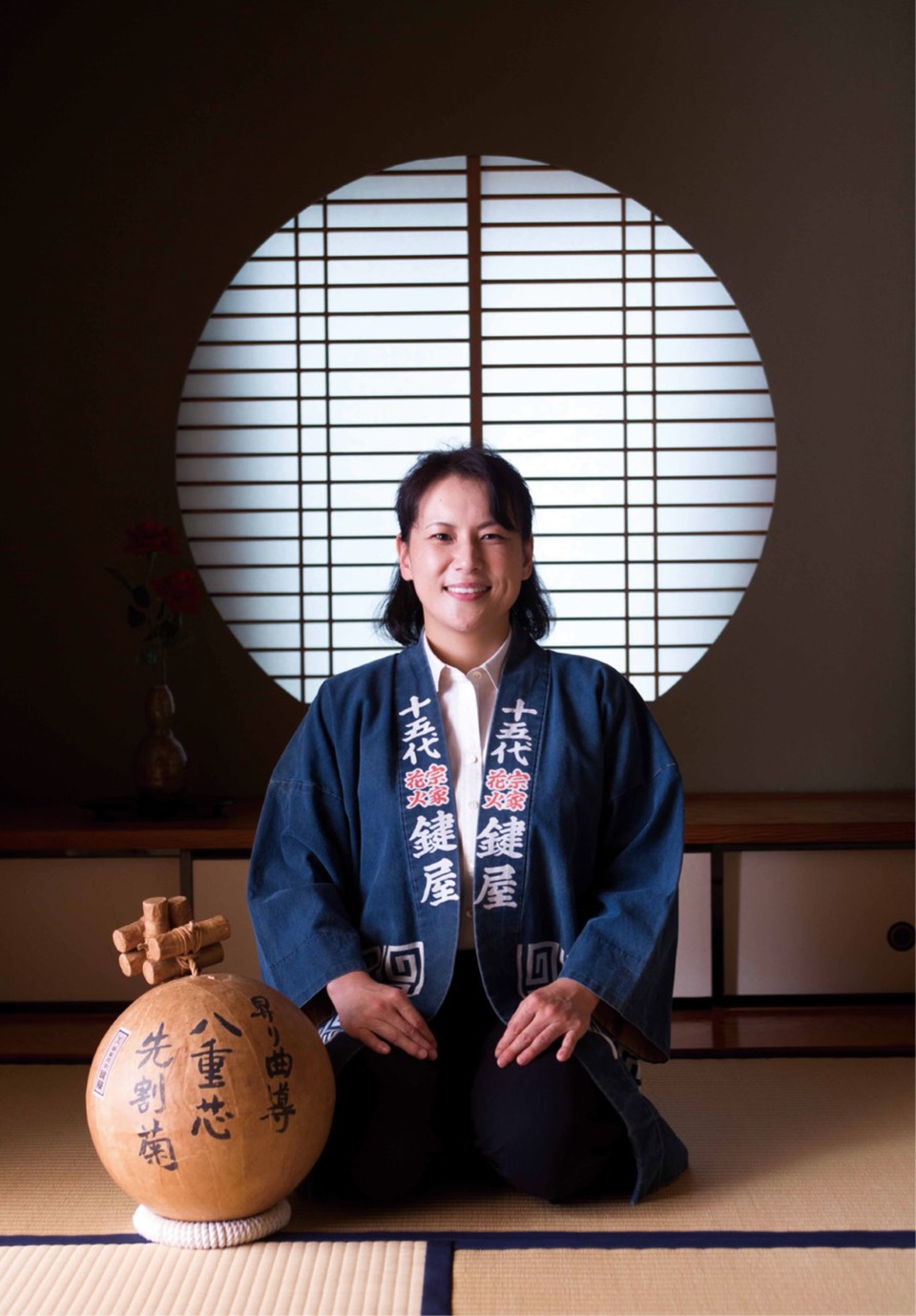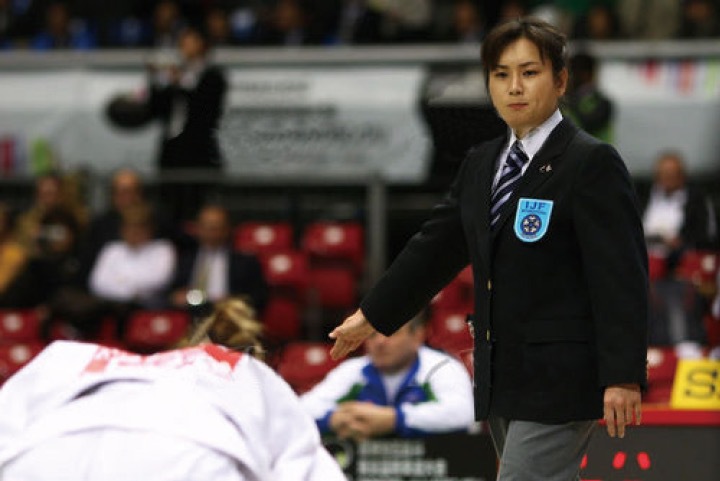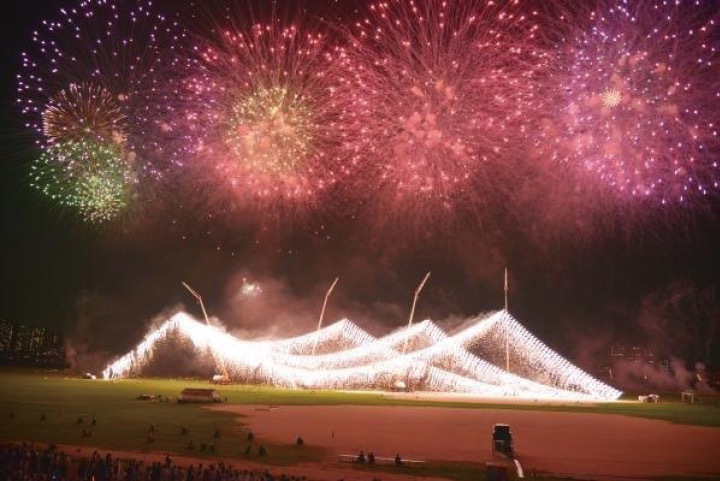The arrival of summer means that fireworks festivals are held all across Japan. Every time fireworks go up, cries of “Kagiya!” can be heard mingled with the applause and cheers. Kagiya is the name of an old established fireworks guild that has been in continuous existence since it was founded in 1659 by Yahe. Its long proud history spanning more than 350 years includes participating in the Ryōgoku Kawabiraki (now the Sumida River Fireworks Festival) in 1733, held at the order of the eighth Tokugawa shogun, Tokugawa Yoshimune.
The present fifteenth-generation head of this old established fireworks guild, Soke Hanabi Kagiya, and the first woman ever to succeed to the position, is Akiko Amano. Amano was surrounded by fireworks and professional fireworks-makers ever since she was a child, vowing to become one herself since second grade in elementary school. The daughter of a fireworks maker, she chose instead to be trained in demanding conditions in workshops away from her family’s business. In those days, only men could handle explosives. She learned to handle these explosives and also endured great hardship in excessive heat conditions. As a result in 2000, she succeeded to the position as the fifteenth-generation head of Kagiya at the age of 29. Such a rapid rise to this traditional position was unprecedented in the long history of Kagiya.
One may marvel at Amano’s mettle, and therein lies her secret. Not only does she make fireworks, but she also wears another hat as an accomplished judo player and referee. Her father and grandfather were both judo players. Amano holds a black belt and was an international referee of judo competitions at the Beijing Olympics. She attributes her backbone to judo.
Amano spoke about the feeling she puts into her fireworks. “Nowadays fireworks can be fired by computer, but I believe that the appeal of Japan is the cultural appreciation for timing (ma). That’s why I value the sense of staging a live performance, and we stick to remote pushbutton ignition. In the course of a display lasting one hour or more, we’d send signals to say, “Now!” more than 200 times. In Japan we take exceptional care with every single shot. Our work is extremely precise.”
In answer to the question “What are fireworks?” Amano replied: “Fireworks have something that energize us. I believe that good fireworks can make the audience feel positive about the future.”
With a body and spirit toughened by judo, Amano carries on the traditions of Japanese culture and the traditional art of fireworks. Behind the soothing summer scene of a night sky dotted with fireworks in full bloom, is the spirit of Japan.
Akiko Amano
Akiko Amano was born in 1970, the second daughter of the fourteenth generation head of Soke Hanabi Kagiya. In 2000 she succeeded to the position of fifteenth generation head. She has a black belt in judo and is an International Judo Federation referee. She also holds a doctorate in art from the College of Art, Nihon University.
Her website is: www.souke-kagiya.co.jp
At the Beijing Olympics, Amano was the first Japanese woman to serve as an Olympic judo referee. A competition judo player as a student, she won a bronze medal at the women’s world judo championships in Fukuoka.

































































































































